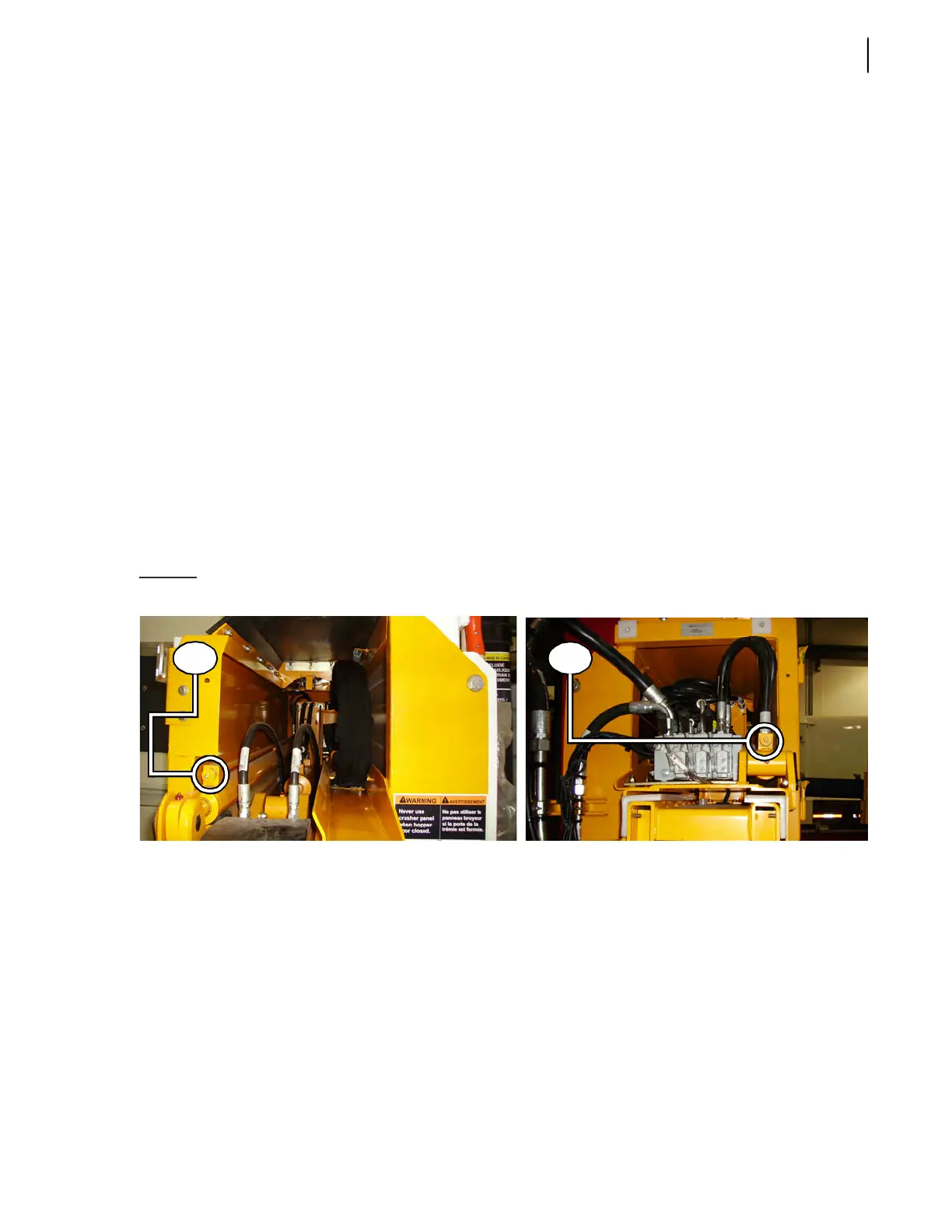Lifting Arm 199
Cylinder Cushion Adjustment
The In/Out and Up/Down cylinders are cushioned at the end of their strokes to give a smoother
movement. The cushioning speed is adjustable directly on the cylinders using two cushion
adjustment screws. If the grabber or the arm hits hard at the end of its strokes, apply the following
procedure.
To adjust the end cushioning of the In/Out cylinder:
1. Secure the arm working area using barrier tape or barricades.
2. Put the transmission in neutral.
3. Start the engine and engage the hydraulic pump.
4. Fully extend and retract the HELPING-HAND™ arm to check if more cushioning is needed.
The arm should not hit hard at the end of its strokes. End of stroke cushioning should provide
smooth operation of the arm.
5. If a cushion adjustment is necessary, stop the hydraulic pump and turn OFF the engine.
6. Tighten the corresponding adjustment screw to achieve a smoother movement at the end of the
stroke or loosen the screw if the movement is too slow (no shock should occur).
Use the adjustment screw on the curb side for the end-of-stroke extension motion (See A in
Figure 10-13); use the adjustment screw on the street side for the end-of-stroke retraction
motion (See B in Figure 10-13).
Figure 10-13
Cushion adjustment screws - In/Out cylinder (curb side: A; street side: B)
To adjust the end cushioning of the Up/Down cylinder:
1. Secure the arm working area using barrier tape or barricades.
2. Put the transmission in neutral.
3. Start the engine and engage the hydraulic pump.
4. Fully raise and lower the HELPING-HAND™ to check if more cushioning is needed.
The arm should not hit hard at the end of its strokes. End of stroke cushioning should provide
smooth operation of the arm.
5. If a cushion adjustment is necessary, stop the hydraulic pump and turn OFF the engine.
6. Tighten the corresponding adjustment screw to achieve a smoother movement at the end of the
stroke or loosen the screw if the movement is too slow (no shock should occur).
A B
